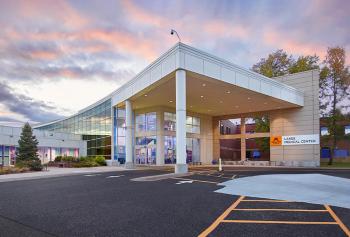
Shift to Video Medical Visits During COVID-19 Brings Positive Patient Responses
Kaiser Permanente authors said having a highly integrated health system strengthened the shift to video medical visits as the pandemic hit.
Telephone and video technology helped physicians quickly overcome disruptions to healthcare delivery brought on by coronavirus disease 2019 (COVID-19), and a study from Kaiser Permanente shows that in some cases patient satisfaction actually increased.
Appearing in the
After a rapid training and education process and transition, the Kaiser region moved first to offering telephone visits and then to video visits. “All face-to-face appointments, including behavioral health care visits, were given the option to convert to video visits as the goal,” the authors wrote.
Kaiser patients are asked to rate their experience on a five-point scale from “poor” to “excellent” based on how well their scheduling needs were taken into account, and how well their needs were met during the visit setting. Once COVID-19 hit, CMS waived guidelines requiring a license to practice in-state, so Kaiser could use telemedicine to treat patients outside the Maryland-Virginia-DC area.
Researchers used responses received between September 29, 2019 through June 20, 2020, to gauge how that transition to telephone and video visits affected patient satisfaction; Kaiser received 7,403 responses to the first question and 82,762 responses to the second question during this period. The study used March 8, 2020, and May 3, 2020, as cutoff dates to define the pre-COVID period, the first COVID-19 period, and the second COVID-19 period.
As Kaiser Permanente physicians quickly pivoted to telemedicine, rather than see patient satisfaction scores decline, the scores increased. The average share of respondents rating their scheduling needs are “excellent” jumped from 57.83% in the pre-COVID period to 64.45% in the first post-COVID period, and then to 67.71% in the second post-COVID period.
Video visits had the highest share of “excellent” ratings from respondents for how well scheduling needs were met, scoring above 71% for all three rating periods. Video visits also received the highest ratings for how well the visit met their overall needs, with ratings above 70% in all three periods. These findings are consistent with other research that show video visits offer a better experience to telephone-only visits, although not all patients or practices have technology to support video.
The Kaiser authors acknowledge that not all practices or health systems have the integration or technology support to manage such a rapid switch. It’s also not known how well these patient satisfaction results will be sustained over time.
“Future studies should extend the analysis to evaluate reemergence from the COVID-19 pandemic and to identify the optimal mix of office-based and virtual care to best meet patient needs and expectations,” they wrote.



































